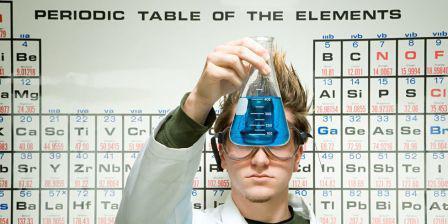Absolute zero: the history of discovery and the main application
The physical concept of "absolute zero temperature"for modern science is very important: it is closely connected with such a concept as superconductivity, the discovery of which made a real furor in the second half of the twentieth century.
To understand what is absolute zero,should refer to the works of such famous physicists as G. Fahrenheit, A. Celsius, J. Gay-Lussac and W. Thomson. They played a key role in creating the main temperature scales that have been used so far.
He proposed his first temperature scale in 1714the German physicist G. Fahrenheit. At the same time, for absolute zero, that is, for the lowest point of this scale, the temperature of the mixture was taken, which included snow and ammonia. The next important indicator was the normal human body temperature, which became equal to 1000. Accordingly, each division of this scale was called "Fahrenheit", and the scale itself - "Fahrenheit scales".
After 30 years the Swedish astronomer A. Celsius proposed his temperature scale, where the main points were the temperature of melting ice and the boiling point of water. This scale is called the "Celsius scale", it is still popular in most countries of the world, including in Russia.
In 1802, conducting his famous experiments,the French scientist J. Gay-Lussac discovered that the volume of the gas mass at constant pressure is directly proportional to temperature. But the most interesting thing was that when the temperature was changed by 10 degrees Celsius, the volume of gas increased or decreased by the same amount. After making the necessary calculations, Gay-Lussac established that this value was 1/273 of the gas volume at a temperature equal to 0С.
From this law followed the pending conclusion: the temperature equal to -2730С, is the lowest temperature, even coming close to it, it is impossible to reach it. It is this temperature that has been called the "absolute zero temperature".
Moreover, absolute zero was the starting point for creating a scale of absolute temperature, the active participation in which took the English physicist W. Thomson, also known as Lord Kelvin.
His main research concerned proofThe fact that no body in nature can not be cooled lower than absolute zero. Moreover, he actively used the second law of thermodynamics, therefore, the absolute temperature scale introduced by him in 1848 became known as the thermodynamic or "Kelvin scale".
In subsequent years and decades, there was only a numerical refinement of the concept of "absolute zero", which after numerous approvals began to be considered equal to -273.150.
It is also worth noting that the absolutezero plays a very important role in the SI system. The thing is that in 1960 at the regular General Conference on Weights and Measures the unit of thermodynamic temperature - kelvin - became one of the six basic units of measurement. It was specially stipulated that one degree of Kelvin is numerically equal to one degree of Celsius, only here the reference point "according to Kelvin" is considered absolute zero, that is -273,150С.
The basic physical meaning of absolute zeroconsists in the fact that, according to the basic physical laws, at such a temperature the energy of the motion of elementary particles, such as atoms and molecules, is zero, and in this case any chaotic motion of these same particles must cease. At a temperature equal to absolute zero, the atoms and molecules must occupy a clear position in the main points of the crystal lattice, forming an ordered system.
At the present time, using a specialequipment, scientists were able to obtain a temperature of only a few millionths of a fraction greater than absolute zero. It is physically impossible to reach the same value because of the second law of thermodynamics described above.








